All you need to know about rapid waves: History, locations and the new pools
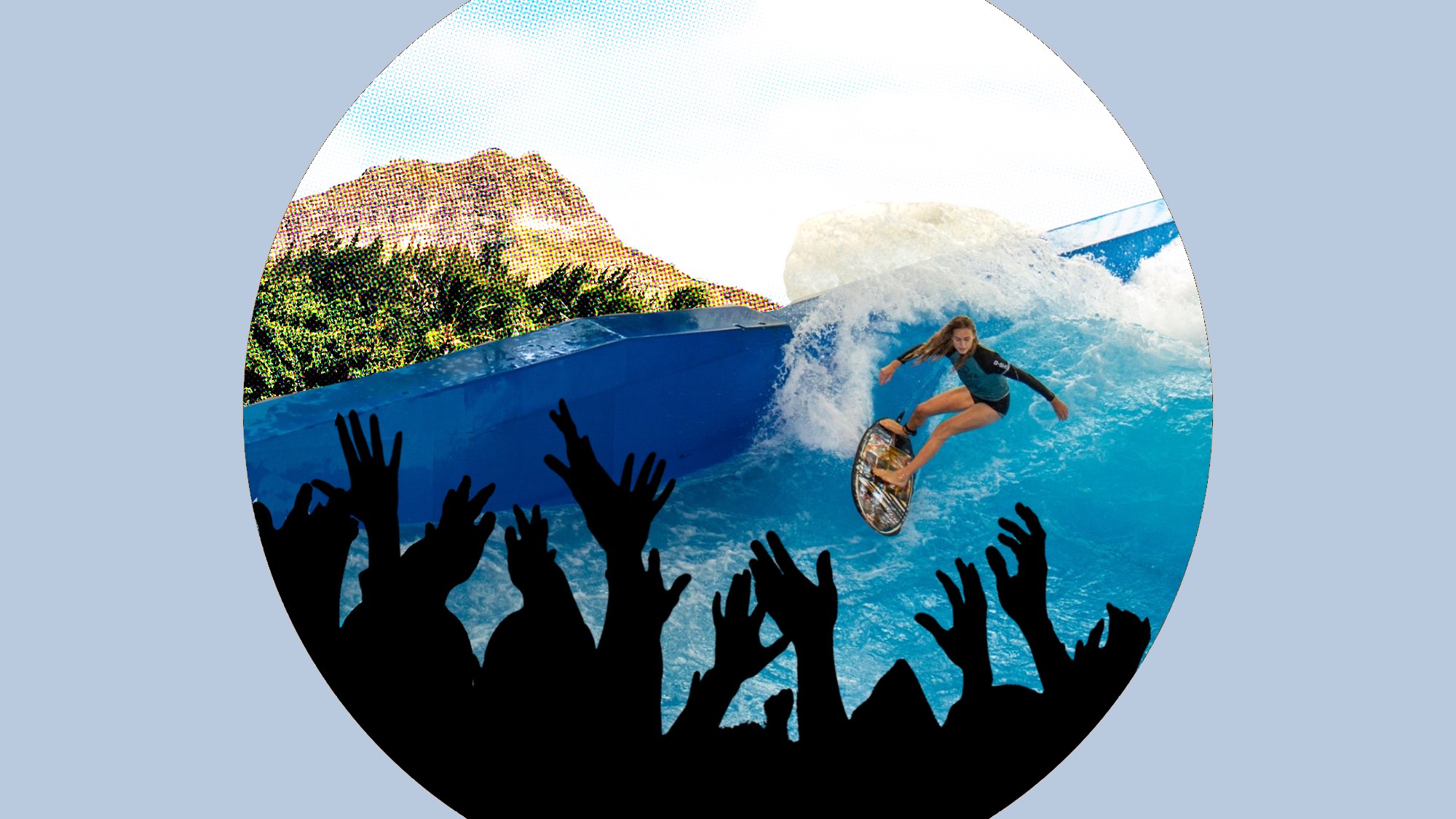
We’ll explore the question of how a rapid wave pool is different from Kelly’s wave pool and answer the question, “Is there a difference between standing waves, river waves, rapid waves, deepwater standing waves and stationary waves?” No. These are simply different terms for the same type of wave. Rapid waves are, however, very different from sheet waves like a Flowrider which requires a special board. With rapid wave pools you can use full-size ocean and wave pool surfing equipment. Got it? Great. Now you’re primed and ready. Let’s dig in…
As you scroll your Instagram feed, you may have paused on recent videos of Hawaiian pro surfer Jamie O’Brien riding a behemoth standing wave gushing out of the Waimea River mouth. Rapid waves are a unique way to harness the energy of water, and a novelty that draws the attention of all surfers.
Rapid waves (also called standing waves, river waves, stationary waves or deepwater standing waves) can be found all over the globe – created by the power of rivers or artificially produced via technology in a wave pool, as detailed in this map.
Just like surfing, these waves come in all shapes and sizes, even giving birth to surf communities hundreds of miles from any ocean. And while riding rapid waves may seem like a new phenomenon, it actually has a rich tradition that may date as far back as riding ocean waves.
The current-day landscape of these surf spots varies from small, natural waves found in remote rivers, to commercial projects set to make 100 ft wide artificial waves.
How do rapid waves form? Where are they found?
Rapid waves occur when fast flowing water hits a shallow bottom contour that causes a wave to stand up. Just as a wave breaking on a shallow reef in the ocean, the water hits the shallow bottom and lifts the ocean energy until it is steep enough to ride, or it can no longer support its gravity and breaks on itself, creating a continuously breaking wave.
These rapid waves can generally be found in three places that feature the necessary properties: rivermouths, rivers, and, now, in wave pools.
As the drone footage shows, when the berm between Waimea River and the bay is dug out, it creates a series of rapids which are surf-able.
History of Rapid Surfing
Polynesian culture, particularly in Hawaii, has a long recorded history of ocean surfing. However, recent research by historian John Clark in his 2011 book ‘Hawaiian Surfing: Traditions from the Past’ suggests that the act of surfing river waves in Hawaii is as old of a tradition as ocean surfing.
In the book, Clark explains that river surfing has historically been practiced on at least four of the Hawaiian islands, the Waimea River on Oʻahu, the Wailua River on Kauaʻi, the Wailuku and Waiohonu rivers on Maui, and the Wailuku, Honoliʻi, Papaʻikou, and Waipiʻo rivers on the big island of Hawaiʻi.
Clark draws text from a tale in ‘Ka Hoku o ka Pakipika’, a Hawaiian-language periodical published March 20, 1862. The story recounts river surfing in Hilo saying, “It was raining and the water came streaming down, forming river waves that everyone surfed just like one does the waves of the ocean.”
The Waimea river mouth still remains one of the epicenters of river surfing culture today. And from its ancient beginnings on the Hawaiian Islands, in the last half-century, surfing standing waves has gained a footing around the world. Europe and North America, in particular, have established strong river surfing communities, and the invention of manmade standing wave technology in the past three decades has allowed the sport to further proliferate to all corners of the planet.
• 1822 – As stated in John Clark’s book, ‘Hawaiian Surfing: Traditions from the Past’, missionary William Ellis visits Hawaii and writes in his journal that he saw locals surfing “agitated water” rushing from overflowing river mouths – the earliest direct evidence of a practice that likely dates back hundreds, or thousands, of years.
• 1965 – Earliest image of surfers riding rivers in Bavaria, Germany holding a rope tied to shore.
• 1978 – North American river surfing pioneered on Wyoming’s Snake River.
• 1986 – River surfing hits the mainstream when featured in a US nationally released Mountain Dew commercial.
• 1992 – Hawaiian surf legend Gerry Lopez travels to Bend, Oregon for the first time and surfs a standing river wave. He would eventually call the city home.
• 2010 – citywave opens the first standing wave pool in Bispingen
• 2013 – Boise Whitewater Park opens
• 2023 – Several technology companies present in the space, new innovation being pushed for standing waves.
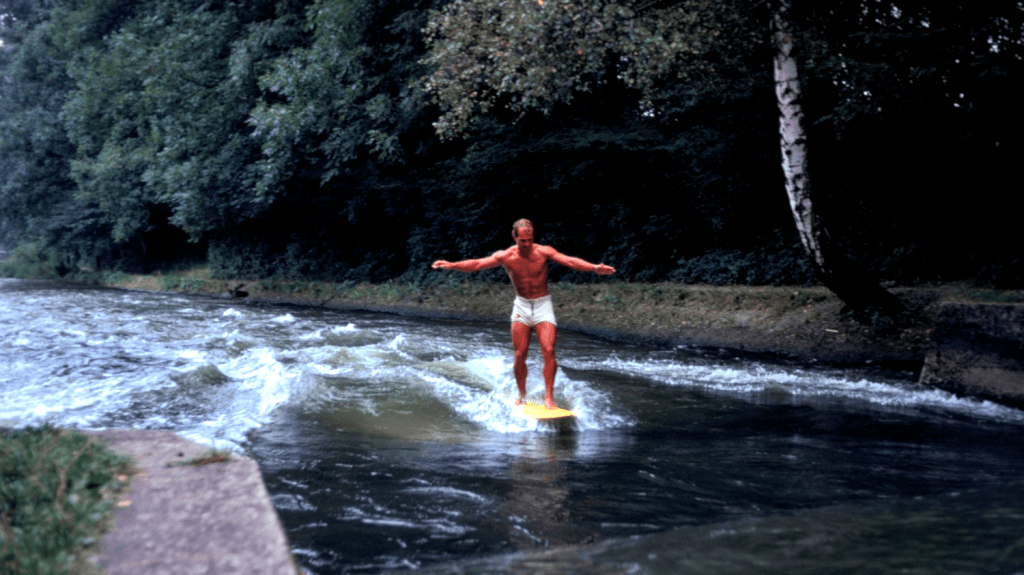
Technique: The Difference Between Surfing a Rapid Wave and an Ocean Wave
Knowing how to surf a traditional, non-stationary wave certainly helps when trying out a standing wave, but they require a different set of control and skill from the rider. A rapid wave generally requires your weight to more frequently shift toward the back of the board than on a typical ocean wave, which generally requires more weight forward.
The entry method is also different. While surfers propel themselves via paddling into waves in the ocean and wave pools, a stationary wave can be entered in a standing position or by acid drop. Surfers can also start in a prone position and pop up, similar to the ocean.
Quirin Rohleder, a legend of the famous Eisbach river wave in Munich who is also an accomplished ocean surfer, explained the difference between ride a standing versus travelling wave.
“One of the biggest differences is you can’t do top-to-bottom turns [on a standing wave], so it’s more on the horizontal level,” said Rohleder. “On a rapid, you are constantly doing roundhouse cutbacks from pocket to pocket. But the flow is constantly changing depending on which rail you’re setting. In general, you are turning back and forth all the time on a standing wave, so you are shifting weight from front to back quite a bit. You have a lot of pressure on your back foot because you don’t have the momentum of the wave pushing you along.”
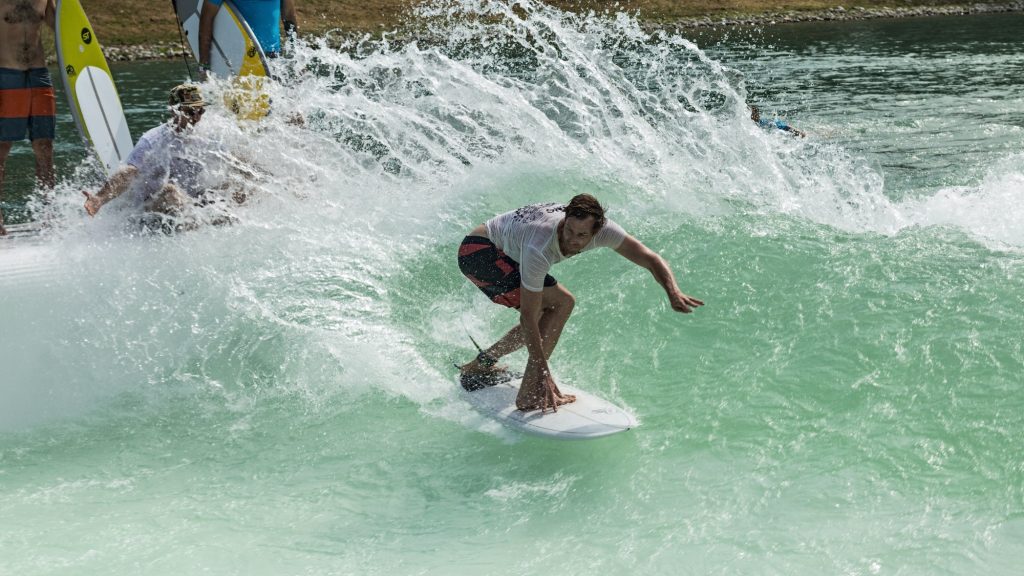
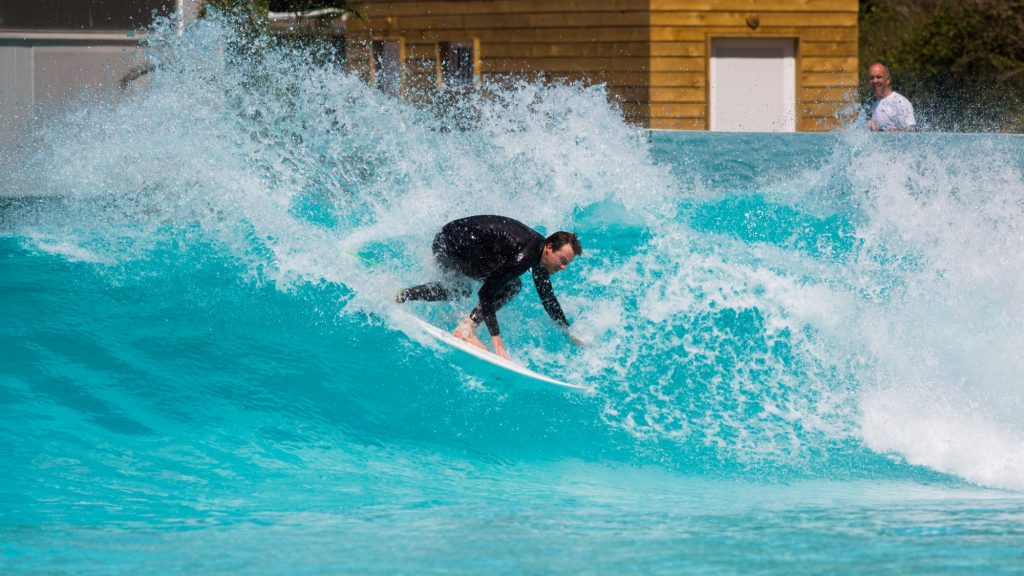
Notable Rapid Waves Around the World
The entire planet is dotted with potential standing wave locations – many still yet to be explored and pioneered. Here are a few of the most popular, natural locations.
Eisbach (Munich)
The Eisbach is perhaps the most well-known standing river wave in the world. Flowing through the center of Munich, Germany, the wave was first surfed in 1972 and has created a land-locked surf community that attracts locals and surfers from abroad.
The wave is best surfed from March to November when water levels are the correct level – too much or too little water can adversely affect the wave.
Waimea river mouth (Oahu, Hawaii)
The Waimea river mouth, located on Oahu’s ‘7-mile miracle’, is undoubtedly the most renowned standing river mouth wave. When the river breaches the beach after a big rain event, a powerful standing wave forms.
Given its location near some of the best surfing waves on the planet, the world’s best surfers are often nearby to take advantage of the short-lived wave.
Aliso Creek (Laguna Beach, California)
Aliso Beach is regarded as one of the best skimboarding spots in North America, so when the Aliso Creek breaches, the skimboarders, surfers, and bodyboarders of Laguna Beach gather to enjoy the standing waves that form.
Due to southern California’s relatively low rainfall, the Aliso Creek wave occurs less frequently than waves like Waimea that receive greater rainfall.
Bend Whitewater Park (Bend, Oregon)
Legendary surfer and ‘Mr. Pipeline’ himself, Gerry Lopez, raised eyebrows in the surfing world when he moved from Hawaii to the landlocked town of Bend, Oregon in the early 1990s. Lopez fell in love with the town and dedicated himself to snowboarding and surfing the standing river waves of Bend.
Lopez detailed the magical experience of discovering river surfing in his memoir ‘Surf is Where You Find It’.
“[A friend in Bend, Oregon] was a great kayaker,” Lopez explained in an interview with Men’s Journal. “He said, ‘Hey, I got a wave out here that I’ve been riding on my kayak. I think you can ride it on a surfboard.’”
“And so he drove me out there in the middle of nowhere. I got out and saw this wave and I went, ‘Wow!’”, Lopez added. “He had an old, beat-up Becker, kind of mini-tanker, and it was his first time. He got out there and jumped in and paddled into this thing, and kind of wobbly got to his feet and it was the coolest thing I’d ever seen. When he fell down, I went, ‘Hey, let me try that.’ And one thing led to another.”
Boise Whitewater Park (Boise, Idaho)
Just east of the river surfing community of Bend, Oregon is another landlocked surf community that rides the waves of Idaho’s rivers. Boise Whitewater Park, which opened in 2013, is a project that developed the river banks and placed manmade, adjustable structures in the water to create waves to surf with the natural flow of the river.
The Zambezi (Africa)
The Zambezi River flows along the border between Zambia, Zimbabwe and Mozambique and through a handful of countries until it empties into the Indian Ocean. Along the way it produces one of the (if not THE) best rapid waves on the planet.
Top Rapid Wave Pool Technologies
While wave pools have lately stolen much of the limelight in the surf park space, rapid wave technology is still advancing and, in fact, more pervasive around the globe.
EpicSurf
Epicsurf technology belongs to the Aquatic Development Group and features an adjustable wave that can be customized for all skill levels. Epicsurf’s debut pool is located in New York State. The technology is also adjustable and can be scaled for indoor or outdoor pools.
FlowSurf
Modeled after the Waimea River Wave, FlowSurf is a new deep flow stationary wave by FlowRider. The goal is to create a stationary wave with less turbulence for a better carving experience, while also using a low amount of energy possible. The wave height can be adjusted from one-to-four feet via programming buttons so the wave pool can cater to beginners, experts, and anyone in between.
Ka’ana Wave Co
Invented by Canadian boarder Jamie Watson, the CM7 standing wave system from Ka’ana Wave Co is a bathymetry-agnostic design, meaning there is not an underwater ramp that creates the wave. It produces a wide variety of wave types via a dock that can be installed in almost any pool size. Water is directed through change-able heads, each one designed to create a different type of wave. The variety of heads produce a barrel, wake and ramp style wave.
Eisbach river wave surfer Rainer Klimaschewski launched Citywave over 20 years ago. Citywave is a deep water technology, which allows for boards with fins. Currently, there are more than a dozen Citywave projects in the works around the world including the biggest artificial standing wave ever created in Washington, USA.
A new project, the LineUp at Wai Kai, on Oahu, Hawaii is using Citywave technology to produce a pool that is 100 ft wide and can handle three lanes of surfers at once – the most ambitious standing wave project to date.
Not only is it the biggest standing wave pool project ever, LIneUp at Wai Kai is the most advanced controller system of any standing wave. They will be able to configure the different lanes to different levels of waves ranging from waist to head-high.
Hydrostadium
Hydrostadium has created two modular rapid wave systems, Wavestadium and WaveBoat. Both systems can generate surf from 2’ to 4.5’ by directing a flow of water over a submerged ramp.
Wavestadium is designed for indoor use. Water circulates in a closed-loop one-quarter the size of an Olympic pool. The pumps are submerged under the pool to avoid noise pollution and help heat the water.
The WaveBoat offers the same wave capacity as the fixed-pool stadium version but is instead, a floating structure. Components come separate and are assembled onshore before the portable surf spot is dropped into lakes, ponds, or rivers. The minimum water depth required is12 feet.
Unit is also a deepwater standing wave technology, but what makes it unique is that it doesn’t need a pool. The floating system can be dropped into any body of water to create a standing wave. While the floating pool is their most popular option, their technology can also be used in a built-in pool on land.
There are currently two open locations in Italy and Germany, with five more projects in development phases in the USA, Mexico, and Germany.
American Wave Machines, the company behind the PerfectSwell moving wave technology found in Waco, Texas and Boa Vista Village in Sao Paulo, Brazil, also have a standing wave technology, Surfstream. Their most notable location is in New Hampshire, USA. Water flows out a chute and is shaped into a wave by the pool’s bathymetry.
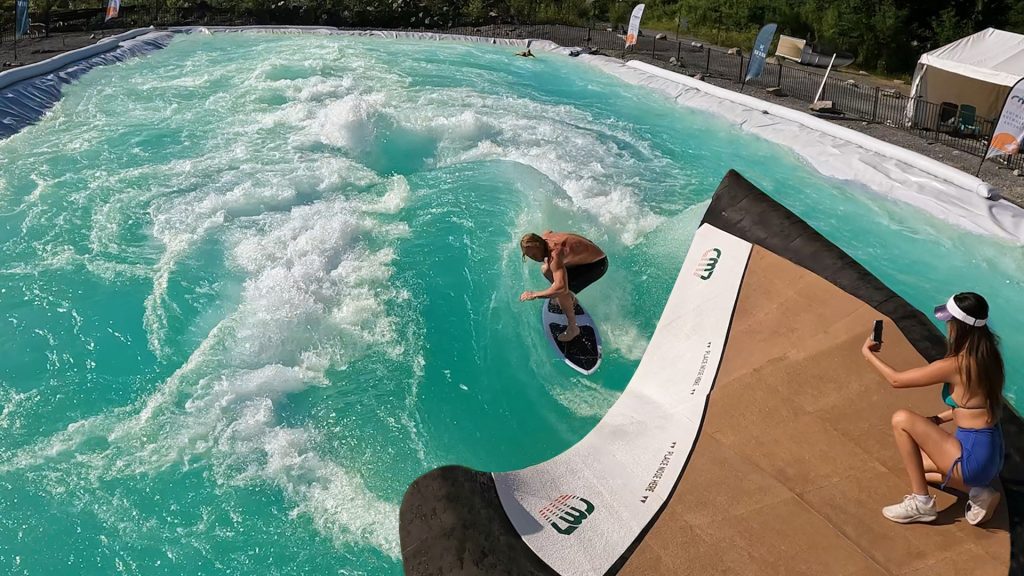
Why would an ocean surfer or wave pool surfer resort to a standing wave? Basically, it’s really fun. And this type of wave riding, like all types of surfing, has its pros and cons.
Pros
Cons
• Consistency – Especially with manmade standing waves. You can surf all day, every day.
• Crowds – With the exception of a few overly popular standing river waves, you don’t have to wait long to get a turn or paddle battle to get on the wave.
• Length of ride – You can ride the wave for as long as your body will let you. More time on the wave leads to faster progression compared to ocean surfing.
• More Accessibility – You will see more standing waves as they can be about 1/10 the cost of a traveling wave pool.
• Variability – While the pool technology does allow for quite a bit of variation in the wave type, it doesn’t compare to the variability of surfing across each unique type of reef, beach break, and point that can be found in the ocean.
• Less Accessibility – There are relatively few places in the world where you can consistently surf a rapid wave. That said, more rapid wave pools are popping up to meet demand.
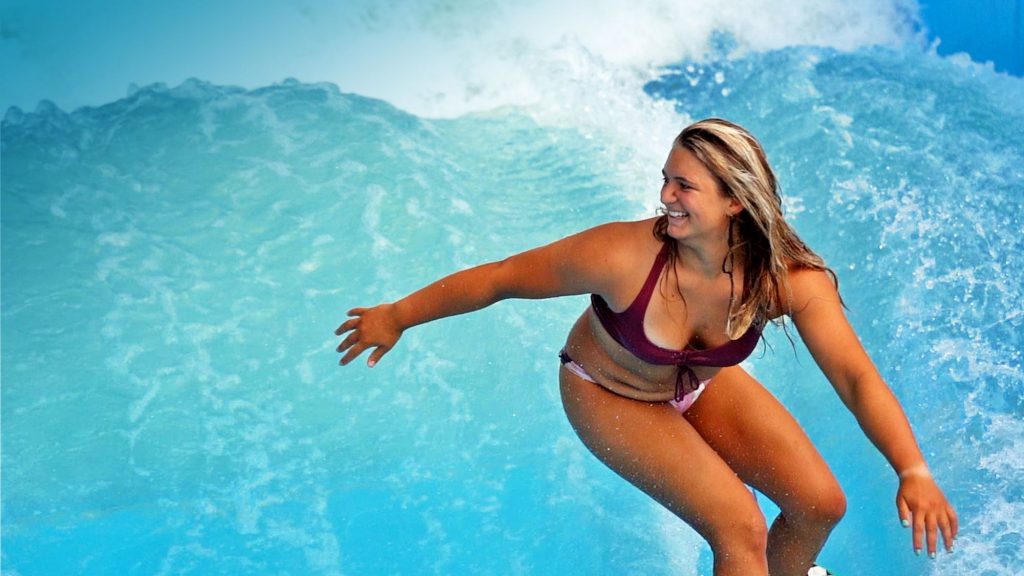
What type of a board should I ride on a standing wave?
In theory, a board shaped for surfing ocean waves can be used on a standing wave, assuming that there is enough depth to use fins. However, boards can be fine tuned to better perform on standing waves.
The first quality of a standing board is typically less length and volume. Given that the board doesn’t need to paddle, some length and volume can be sacrificed to focus on the performance qualities.
“Rapid shortboards would be mostly too small for the ocean,” added Quirin. “In the ocean, I’m surfing a 6’1”, and at the river a 5’8”. A normal 5’8” shortboard shape would be too small for me in the saltwater. But it really depends on the type of board. I surf twin fins and mini-Simmons style boards of the same size at the river and in the ocean. In general, you can say that people are looking more and more at different shapes on rapids as well.”
But just like the ocean, standing waves vary greatly in size, speed, and steepness. A small pocket on a wave, for example, will require a board small enough to fit inside the pocket. A board that is too long for a small pocket will more easily bury the nose.
Also, surfer ability will determine the type of board used, where just like the ocean, a more advanced surfer will lean towards a performance board with less volume. A beginner will require more volume for added stability.
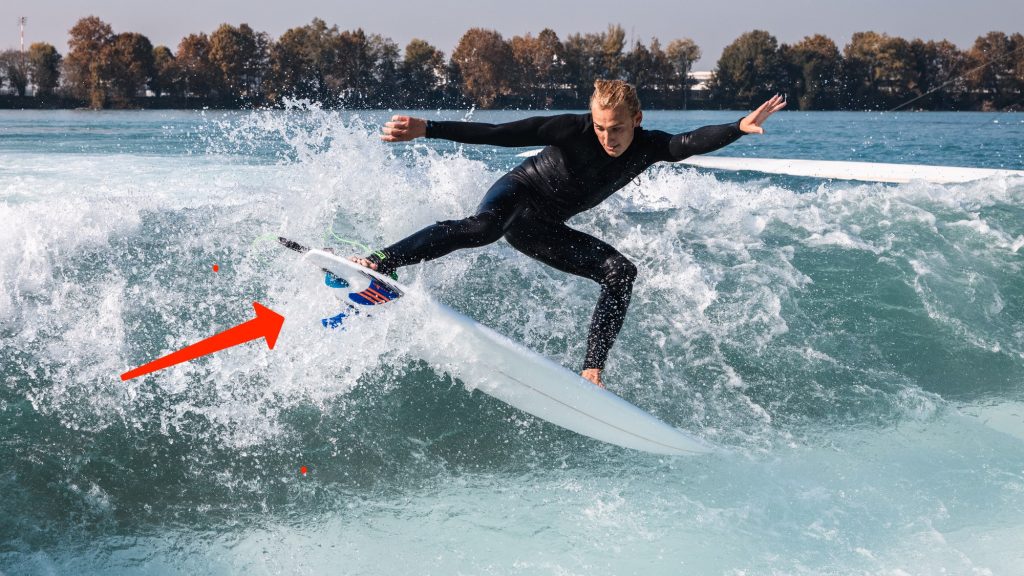
What to Avoid with Rapid Waves
Just as with ocean surfing, there are inherent and unique dangers to consider when surfing standing waves.
Obstacles underwater must be considered. You don’t want to wear an ankle leash or try to stand in fast moving water because that can cause you to get trapped on hazards on the bottom. Natural river waves with hard bottom surfaces are best surfed either without an ankle leash or with a special waist-belt leash.
Also, don’t copy everything you see on social media. Many surfers take it into their own hands to open lagoons at river mouths to induce a standing wave. However, river mouths are sensitive habitats and it’s best to let them naturally breach on their own so as to not adversely affect wildlife.
Surfers that do open the river mouths either have permission from local authorities or are doing so illegally. Be aware.
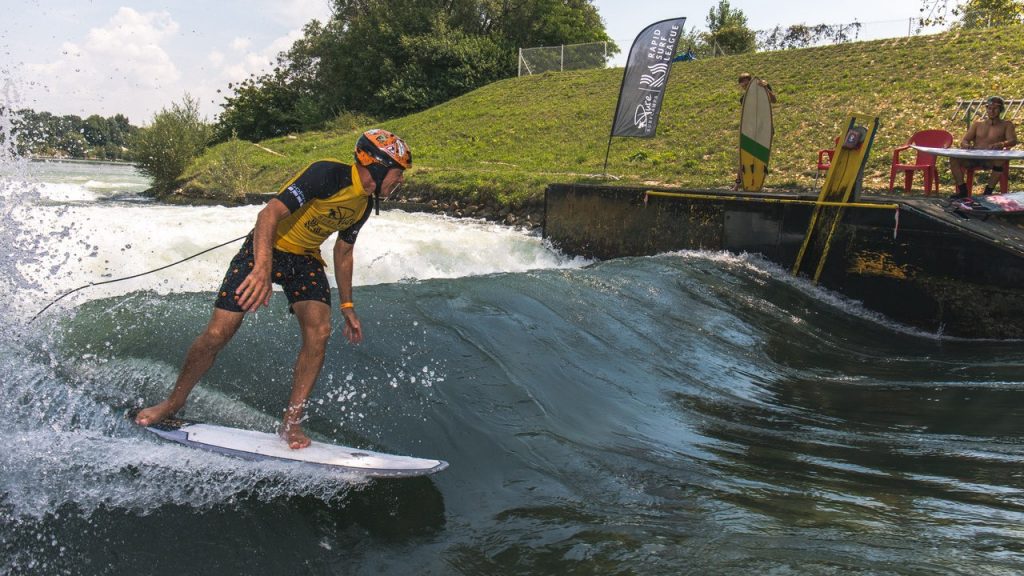
Another form of riding waves
Rapid wave surfing isn’t ever going to replace ocean surfing, but not everyone has access to the ocean 24/7. Deepwater standing wave pools and river surfing provide an exhilarating complement to the ocean. There’s a reason you see pro surfers like Jamie O’Brien, Kelly Slater, Mick Fanning, Blair Conklin, and Ben Gravy chasing these novelty waves. It’s simply fun.
Standing waves also have the power to bring surfing to landlocked areas that otherwise wouldn’t have access to the sport, reaching new frontiers. Just look at what Afridun Amu has done with a surf trip to his home nation, Afghanistan, to search and pioneer standing river waves.
As surfing enters a global growth phase in the Olympic era, we can expect all forms of the sport to rise with the tide. More people are interested in surfing now than ever, and standing waves, whether natural or artificial, will provide an excellent opportunity for an introduction to the sport.
Editor’s Note: This article originally appeared on WavePoolMag in 2023. We are reposting it today as the Northern Hemisphere gears up for summer – which will hopefully include trying out a rapid wave pool technology near you.
Related Coverage
